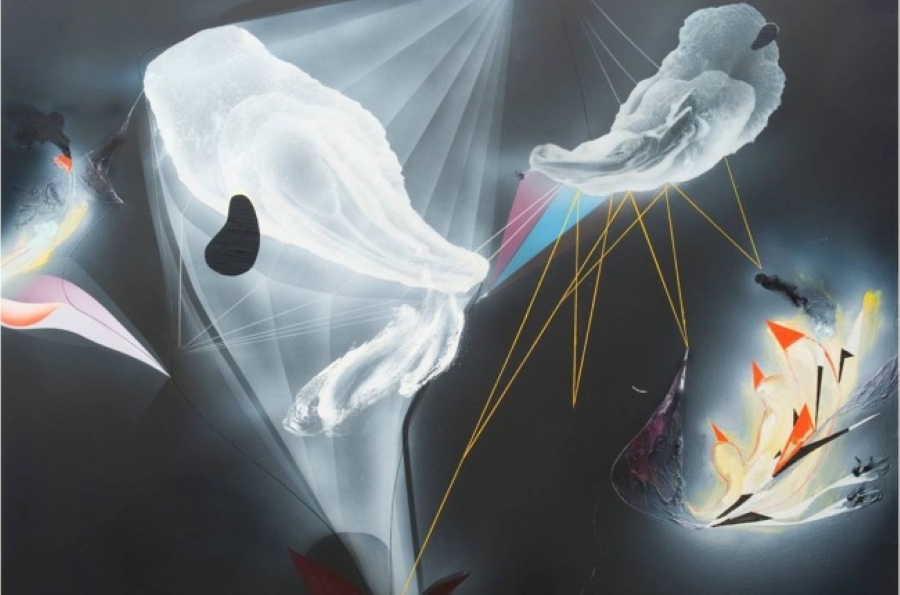Lock provides the viewer with a frame and a template to let the imagination loose – and the apophenic delights within are hypnotic.
Image: Christian LOCK, Taste the Space Candy (detail), 2011,
synthetic polymer paint and oil on canvas, 183.0 x 183.0 cm
CHRISTIAN LOCK (SA)
Born 1969, Adelaide, lives and works in Adelaide, South Australia
There’s much at play in Christian Lock’s paintings: space and illusion, surface and depth, texture and smoothness, abstraction and figuration. The eye attempts to unravel the detail while trying to reconcile the entirety of the pictorial space. But it’s no easy task. Lock’s paintings suggest a sky dotted with strange clouds, and the curlicues of something far darker, cloudbursts of the unconscious spreading out in a contemporary sublime. Taste The Space Candy (2011) is such a painting: gestural marks and billowing white formations coalesce against a moody background, the ambiguous, biomorphic forms connected by white and yellow lines. But where one might imagine space – such as in the white forms – black blobs of paint defeat the illusion, rather like a sticker placed over a photo. Lock tells us: all here is illusion.
In 2003 Maria Bilske noted in an essay on Lock’s work that the basic unit of painting is the brushstroke and that this unit has itself taken on a range of meanings and implications, from the disappeared brush stroke of hyperrealism to the mannered self–conscious presence of expressionism. In 2003 Lock had presented a series of works featuring painted holographic stickers with impasto smears of acrylic paint that highlighted the ironic play between the visible and the infinite. Since then Lock has experimented with a variety of techniques and approaches to making pictures, from the layering of effects and form in paintings like Space Candy to works that have only a tenuous presence, being created from pools of pigment blown this way and that by hairdryer, leaving little more than the trace of colour on the canvas.
The unifying through–line of the work has been Lock’s ongoing interest in the status of the painting and its component parts, both as signifiers of the language of the form, but also as a dialogue with its history. Lock has referred to himself as a ‘sampler’ and ‘remixer’, someone who creates new songs from the fragments of the old, but the most compelling aspect of the work is its rich psychological implications. Lock provides the viewer with a frame and a template to let the imagination loose – and the apophenic delights within are hypnotic.
Text by Andrew Frost, a Sydney based art critic, writer, academic and broadcaster, who contributes to a variety of national and international publications.
Artist's website: www.christianlock.com

